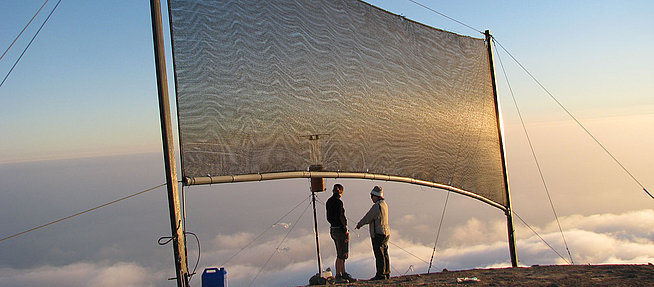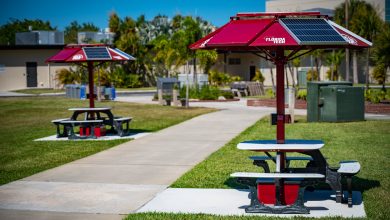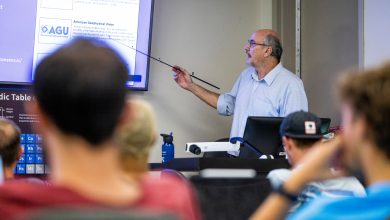Got Fog, Make Water
by Melissa Lockwood, Marine Biology with Sustainability minor ’12
Fog rolls in through the mountain forest.
Man sets up a big net.
Water from the fog collects in a tank.
Man has water.
Man is happy.
When I first read about people harvesting water from fog, my mind went: “ WHY HAVE WE NOT BEEN USING THIS UNTIL NOW!”
After a little research, I found out that people have been harvesting water from fog for centuries. An article from National Geographic suggests that some cultures around the world may have been using this idea for the last 2,000 years. If you think about it, this makes sense. If you lived in a desert area with no standing water, you had two options: die of thirst or get creative. Since mankind is still here, let’s assume those desert ancestors got creative.
People became interested in this concept about 100 years ago and today the technology is scattered around the world. In fact, there is even a Youtube video on it (with really good music)! Unfortunately, this technology is only feasible to use on a small scale, so it’s not a save all for big cities like Los Angeles or London. BUT, it is a viable option for small towns/villages in developing counties with no access to well or river water. Peru, Nepal, Haiti and the Dominican Republic all have successful programs.

This is also a great example of how past civilizations created and used sustainable technologies. Granted, they probably were more concerned with obtaining water than the environmental friendliness of the collection process. Today, as potable water (aka water that won’t kill you if you drink it) becomes more and more scarce, we might end up relying on innovative technologies like fog nets. With further development, large scale projects might become feasible (you engineering types should get on that).
What cool sustainable innovation knocked your socks off? Add your technological wonders to the comments.





